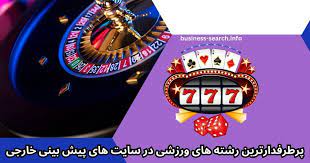Introduction:
Forex, short for foreign exchange, is a global market where forex robot currencies are traded. It’s one of the largest and most liquid financial markets in the world, offering vast opportunities for traders to profit from fluctuations in currency values. However, success in forex trading requires more than just luck; it demands a solid understanding of the market, effective strategies, and disciplined execution. In this article, we’ll delve into the intricacies of forex trading and explore key strategies to help you navigate this dynamic market with confidence.
Understanding the Forex Market:
The forex market operates 24 hours a day, five days a week, allowing traders to participate from anywhere in the world. Unlike stock markets, forex trading doesn’t have a centralized exchange; instead, it’s conducted over-the-counter (OTC) through a network of banks, financial institutions, corporations, and individual traders. The primary participants in the forex market are commercial banks, central banks, hedge funds, multinational corporations, and retail traders.
Key Currency Pairs:
Currency pairs are the building blocks of forex trading, representing the exchange rate between two currencies. Major currency pairs, such as EUR/USD, GBP/USD, and USD/JPY, are the most heavily traded and offer high liquidity and tight spreads. Minor currency pairs, also known as cross currency pairs, don’t include the US dollar but still see significant trading activity. Exotic currency pairs involve currencies from emerging or smaller economies and typically exhibit higher volatility and wider spreads.
Fundamental Analysis:
Fundamental analysis involves evaluating economic indicators, central bank policies, geopolitical events, and market sentiment to forecast currency price movements. Key economic indicators include Gross Domestic Product (GDP), inflation rates, employment data, and interest rates. Central bank decisions, such as monetary policy announcements and interest rate changes, can have a profound impact on currency values. Geopolitical events, such as elections, trade tensions, and geopolitical conflicts, can also influence currency markets.
Technical Analysis:
Technical analysis relies on historical price data, chart patterns, and technical indicators to identify potential trading opportunities. Commonly used technical indicators include moving averages, Relative Strength Index (RSI), MACD (Moving Average Convergence Divergence), and Fibonacci retracements. Chart patterns, such as support and resistance levels, trendlines, and chart formations like head and shoulders or double tops/bottoms, provide valuable insights into market psychology and potential price reversals or continuations.
Risk Management:
Risk management is crucial in forex trading to protect capital and minimize losses. This involves setting appropriate stop-loss and take-profit levels, determining position sizes based on account size and risk tolerance, and diversifying trades across different currency pairs. Traders should also be mindful of leverage, as it amplifies both profits and losses. Using risk-reward ratios to assess potential returns against the risk of each trade can help maintain a favorable risk-to-reward profile.
Developing a Trading Plan:
A well-defined trading plan outlines specific entry and exit criteria, risk management rules, and overall trading objectives. It should consider factors such as trading style (e.g., scalping, day trading, swing trading), timeframes, and preferred currency pairs. Regularly reviewing and adjusting the trading plan based on market conditions and performance is essential for ongoing success.
Conclusion:
Forex trading offers unparalleled opportunities for profit, but success requires a combination of knowledge, skill, and discipline. By understanding the intricacies of the forex market, employing effective trading strategies, and implementing sound risk management practices, traders can increase their chances of success in this dynamic and exciting financial arena. With a well-developed trading plan and a commitment to continuous learning and improvement, mastering the art of forex trading is within reach for aspiring traders worldwide.







